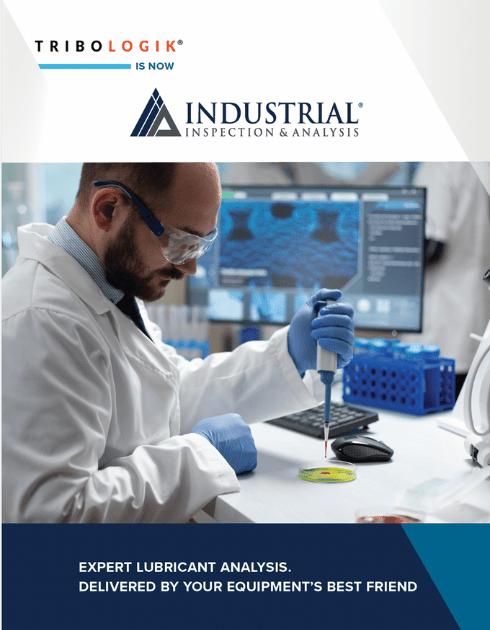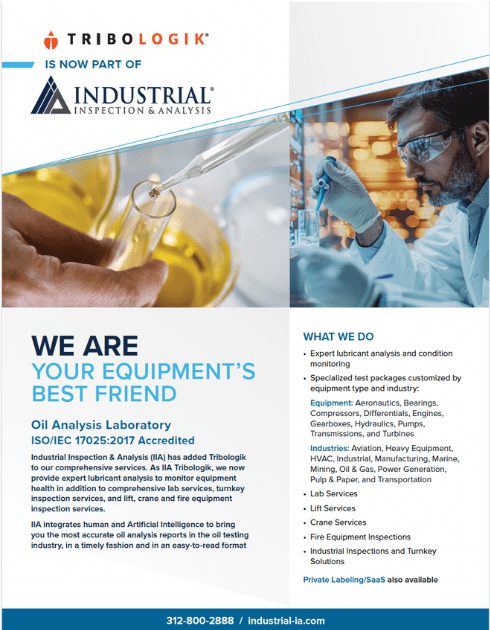Coolant Testing & Analysis
Our team will test and analyze coolant to determine the fluid’s capacity to offer antifreeze properties and prevent engine failure.
Avoiding Diesel Engine Problems
Poor maintenance of the cooling system causes 40% of all problems in diesel engines.Coolants are a mixture of water with ethylene glycol or propylene glycol, and thus can freeze. They increase in volume, solidify and crack hoses, radiators, and engine metal. At high temperature, coolants decompose and produce a corrosive acid in the cooling circuit. Coolants are also vulnerable to contamination.
A systematic analysis program is necessary to monitor their degradation and detect wear signs in the cooling units.
Talk To An Expert
Don’t see exactly what you are looking for? Or maybe you do and want more specifics or an estimate. Either way, you can call us at
470-264-5765
right now or just fill out the form below and we will respond back within 24 hours.
Boiling Point (BP)
The Boiling Point is dependent upon the concentration of antifreeze in a coolant fluid. The maximum operating temperature of the coolant system should be lower than the boiling point. This equilibrium boiling point indicates the temperature at which the sample will start to boil in a cooling system under equilibrium conditions at atmospheric pressure.
Color, Odor, Foam, etc. (COP)
Color, odor, clarity, precipitate and foam may serve as an indication of the degree of use of the fluid. Precipitate is a solid formed in the fluid by contamination. Foaming can result from excessive agitation, improper fluid levels, air leaks, contamination or cavitation.
Conductivity of Coolant (COC)
Conductivity of coolant examines the ability of the coolant to resist carrying an electrical current between two dissimilar metals. At high conductivity, harmful pitting and corrosion can occur. The level of conductivity is determined by the concentration of glycol and additives in the coolant. The inhibitor chemicals, silicates, contaminants and water hardness compounds can lead to water pump failure.
Density (DEN) - ASTM D4052
The Density of coolant helps determine the fluid's composition and describes the ratio of mass and volume of a liquid, usually in the units of Kg/L.
Freezing Point (FRT) - ASTM D1177
The Freezing Point measures the temperature at which a coolant solidifies. It is dependent upon the concentration of antifreeze in coolant fluid.
Glycol Percentage (Coolant) (GLYCP) - Refract
Glycol Percentage determines the percentage of antifreeze in coolant. When the glycol concentration is higher than 70%, the freezing point is not improved and heat transfer capacity is reduced. This may cause supplemental coolant additives (SCA) drop-out, water pump seal damage and overheating.
HPLC (HPLC)
High-performance liquid chromatography is an effective methodfor the determination of corrosion inhibitors in coolant solutions based on ethylene glycol.
ICP Spectrometric Analysis (Coolant)(CSP) - D6130
Some engine coolants are formulated with silicon containing additives.This test method covers the determination of silicon in engine coolant by inductively coupled plasma-atomic emission spectroscopy (ICP-AES). Silicon can be determined as low as the range of 5 ppm by this test method. Other elements also found in engine coolant can be determined by this method.
Ion Chromatography (IC) ASTM D5827
The ion chromatography test provides qualitative and quantitative determination of common anions in engine coolant in the milligrams per litre to low percent range in parts per million (ppm). This test method covers the chemical analysis of engine coolants. It determines nitrites and nitrates which are metal protecting inhibitors that can reduce premature engine failure; chloride and sulfate contaminants resulting from spring water or air leaks; glycosates, acetates, formates and oxalates resulting from the thermal breakdown of ethylene glycol. The test method is applicable to both new and used engine coolant. IC testing also determines the quality of the glycol used in new coolants.
Nitrate-Coolant (DNDN) - KIT
Testing for corrosion inhibitors is a method of checking the coolant condition. Because nitrites deplete rapidly compared to other inhibitors, testing for nitrite allows one to learn the coolant’s nitrite level. Some engines require inhibitors such as nitrites to be maintained at certain levels to offer protection against cavitation corrosion, which can occur in engines with removable cylinder liners. Nitrites tend to deplete rapidly in conventional coolants and must be replenished at regular intervals.
Organic Acid-Coolant (DNDA) - Refract
Organic Acid Technology (OAT) coolants provide improved corrosion protection and long life. OAT corrosion inhibitor packages are used in automotive, heavy duty, marine and industrial applications. Checking the quality of the coolant solution regularly will ensure problem-free operation.
PH Measurement (PH) - ASTM D1287
The pH Measurement reveals the coolant's level of acidity or alkalinity. An acidic pH will cause corrosion of ferrous components, while a basic pH will cause corrosion of copper and aluminum components.
Total Dissolved Solids (TDS)
Total Dissolved Solids examines the combined content of all inorganic and organic substances contained in a liquid, which are present in a molecular, ionized or micro-granular suspended form. It is affected by the concentration of glycol to water in coolant as well as the concentration of additives. Inhibitor chemicals, silicates, contaminants and water hardness compounds can all lead to water pump seal failure.
Total Hardness (HARD)
Water hardness compounds can lead to water pump seal failure, clog the cooling system, shorten their life span and require more detergent for a same result. Maintaining appropriate levels of hardness will prevent water from becoming corrosive or scale-forming. See our February 2014 Newsletter for additional details.
Water and Sediment (DNDS) - ASTM D2709
This test method is used as an indication of free water and sediment suspended as haze, cloudiness, or droplets.An accumulation of sediment is a cause of obstruction whereas free water can cause corrosion.


